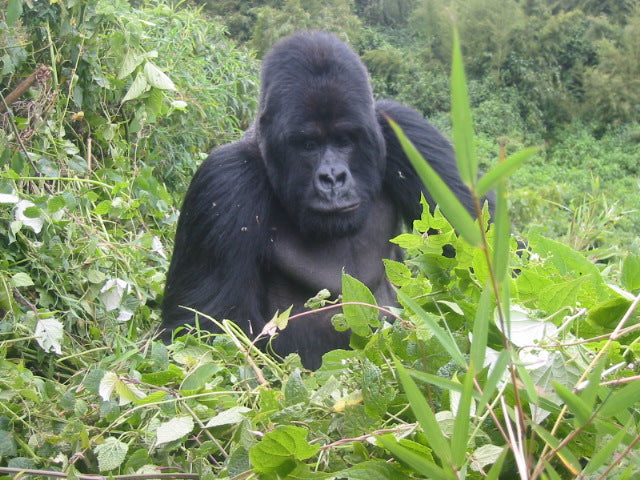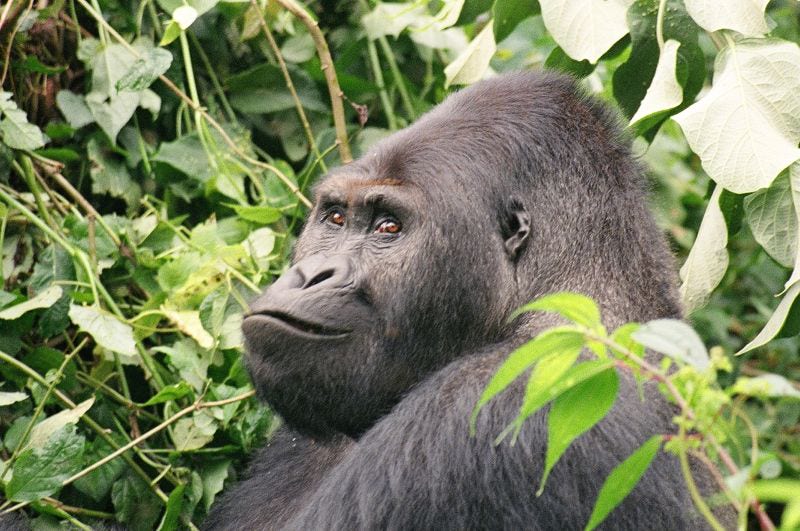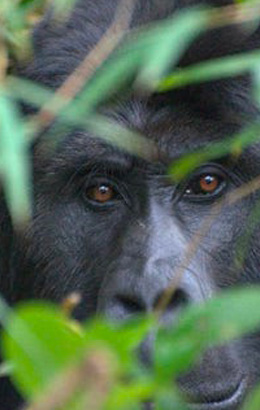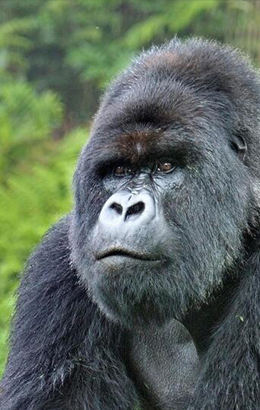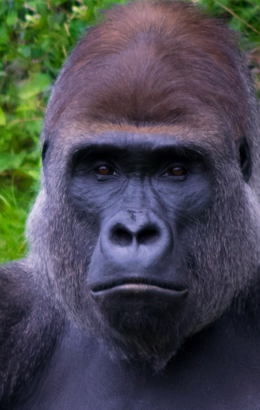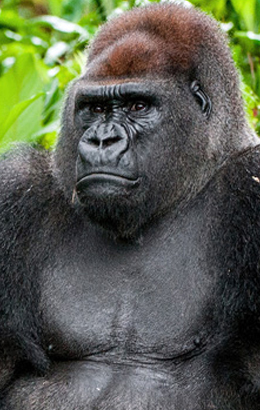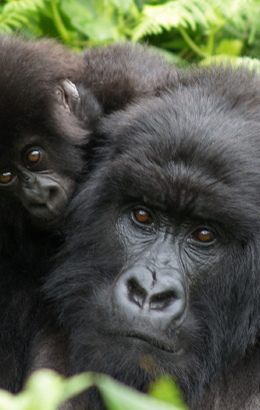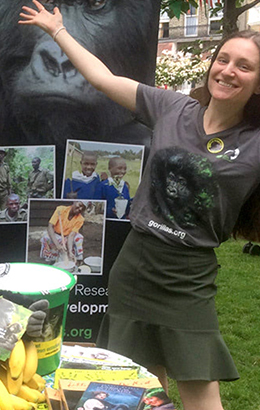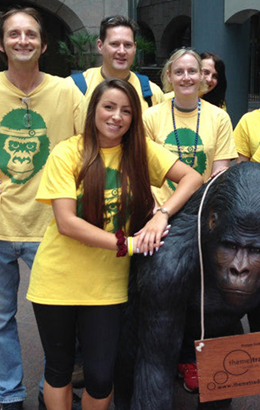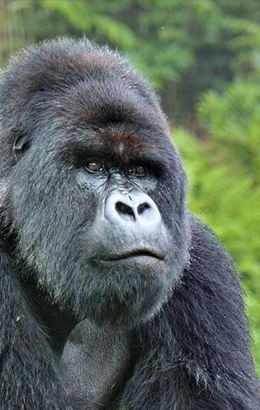In praise of the silverback – much more than just brute strength

Hi, this is Tuver,
I’ve been working in gorilla conservation for almost 20 years. Over that time, I have been into the forests of my native DR Congo countless times, usually to observe the mountain gorillas you help to protect. The sight of our cousins in their native habitat never fails to inspire me. But, I must admit, one thing awes me more than anything: the sight of a powerful silverback.
Now, most of you will know that the silverback is the adult male that leads the group, named after the distinctive silver hair that starts growing on their backs from the age of around 11 or 12. But few people realise just how fascinating and complex the life and role of a silverback really is. So let me explain a little.
The protector and leader
Above all, what distinguishes a silverback from the rest of his group is his size and strength. Let’s put it this way: they are huge! A typical adult mountain gorilla male will be around six feet tall when he stands on his back legs – a full foot taller than an adult female. He will weigh around 350 pounds, twice the average weight of an adult human male, with much of this made up of the huge muscles in his legs and chest.
These big muscles aren’t just for show! A key role of the silverback is to serve as the protector of his group from any potential dangers. In the jungles of Central Africa this can mean the threat of wild leopards or even other single male gorillas looking to take over a family. If beating their chests loudly or stamping their feet in a show of strength doesn’t work, then a silverback will fight, often at great risk to himself, using his huge arms and teeth.
The decision maker
But a silverback does much more than guard and fight. As the leader of a group, they are also the main decision makers. This means they will decide where a group will make their day or night nests to sleep, plus it also means that they lead the search for food. In fact, a silverback can lead their group for up to five miles a day in search of a lush patch of wild celery or nettles or a safe, secluded place to spend the night. As you might imagine, a silverback rarely listens to the opinions of others – any younger male or cheeky youngster wanting to go their own way is quickly brought back into line!
The father figure and mentor
For me, however, the one thing that always fascinates me about silverback is their gentleness, not just their strength. In the Virunga National Park, for example, there is an aging silverback called Humba. He continues to lead his group, even though younger, stronger males have challenged him and even beaten him in fights over recent years. What’s more, only some of the females in his group have been tempted away by these younger, stronger upstarts, with others preferring to stay loyal.
Why is this? Well, we now believe that, in many cases, female gorillas appreciate more than just brute strength. Silverbacks are incredibly gentle and often serve as mentors for youngsters, teaching them what foods to eat and how to make their nests for sleeping. They will also teach young males how to fight and even happily serve as playmates or even passive climbing frames for excitable infants – a site which never fails to shock visitors to the National Parks.
So, you see, silverbacks aren’t the violent, terrifying brutes they are often presented as. Of course, they can be violent, not just when faced with the threat of predators, but also when it comes to maintaining their status at the head of a group and ensuring the infants they have fathered thrive ahead of the offspring of others. However, in their gentleness, thoughtfulness, inquisitive nature and protective habits, they are more like humans than you might imagine, which makes ensuring their survival even more vital!
